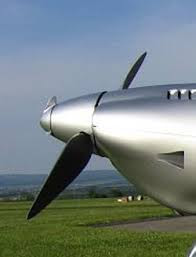
The V-Prop is an automatic self-powering electronic variable-pitch propeller developed by Silence Aircraft, [1] the manufacturers of the Silence Twister [2] single-seat elliptical-winged kitplane. [3]

The V-Prop is an automatic self-powering electronic variable-pitch propeller developed by Silence Aircraft, [1] the manufacturers of the Silence Twister [2] single-seat elliptical-winged kitplane. [3]
The V-Prop was fitted to the prototype Twister and to some of the Twisters built in the EU. Designed by brothers Thomas and Mattheus Strieker, [4] this microprocessor-controlled automatic propeller has a vaned spinner ahead of the main spinner. The main spinner is fixed to the output shaft in the normal fashion; but the vaned spinner is free to contra-rotate, and in doing so both generates its own power and derives rpm data that it uses to determine the ideal blade angle. The unit then automatically adjusts the blades between the coarse and fine positions. On the ground, the electronic control system can be tailored to suit each aircraft by varying some soldered connections, which give some 16 options. [5]
The V-Prop has both 2-bladed and 3-bladed versions, but only for clockwise rotation (as seen from the cockpit). The advantage of the V-Prop is that it is very light and compact, it requires no exterior power source, is fail-safe, and being completely automatic, requires no pilot input. [5]
The V-Prop has been successfully fitted to many light aircraft in Europe, including Denmark, [6] but despite the EU's principle of free movement of goods, the LAA would not approve it for UK kit aircraft without further extensive testing. [7]
In May 2013, Mattheus Strieker confirmed that the V-Prop went out of production some two years earlier. The design rights were sold to Hoffmann Propeller, an established propeller manufacturer in Germany. Hoffman Propeller plans to develop the V-Prop for fitment to certified aircraft as well as to kit planes. Stefan Bichlmeyr from Technical Engineering at Hoffmann Propeller has said that the firm is working with Thomas Strieker to redesign the VProp system for bigger engines. [8]
As of June 2016 this redesign is in process but still not finished. Although the original 5kg two-bladed propeller was effective and was fitted to several European ultralights, Hoffman have suspended any further development. Instead, Hoffmann are focusing on the more lucrative certified aircraft market, and their current prototype is a five-fold heavier (25kg) three-bladed propeller for engines such as the Lycoming O-360.[ citation needed ]
Source: Silence VProp manual [5]

A flying car or roadable aircraft is a type of vehicle which can function both as a road vehicle and as an aircraft. As used here, this includes vehicles which drive as motorcycles when on the road. The term "flying car" is also sometimes used to include hovercars and/or VTOL personal air vehicles. Many prototypes have been built since the early 20th century, using a variety of flight technologies. Most have been designed to take off and land conventionally using a runway. Although VTOL projects are increasing, none has yet been built in more than a handful of numbers.
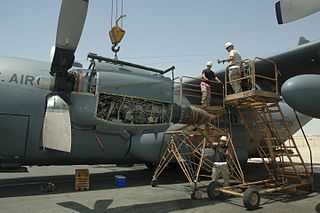
The Allison T56 is an American single-shaft, modular design military turboprop with a 14-stage axial flow compressor driven by a four-stage turbine. It was originally developed by the Allison Engine Company for the Lockheed C-130 Hercules transport entering production in 1954. It has been a Rolls-Royce product since 1995 when Allison was acquired by Rolls-Royce. The commercial version is designated 501-D. Over 18,000 engines have been produced since 1954, logging over 200 million flying hours.

The Let L-410 Turbolet is a twin-engine short-range transport aircraft, manufactured by the Czech aircraft manufacturer Let Kunovice, often used as an airliner. The aircraft is capable of landing on short and unpaved runways and operating under extreme conditions from −50 to +50 °C. By 2016, 1,200 L-410s had been built, and over 350 are in service in more than 50 countries.

The Lockheed XFV was an American experimental tailsitter prototype aircraft built by Lockheed in the early 1950s to demonstrate the operation of a vertical takeoff and landing (VTOL) fighter for protecting convoys.

The Curtiss XP-42 was an experimental fighter built by Curtiss Aircraft in the late 1930s to research engine cooling and improving the performance of the Curtiss P-36.

The General Electric CJ805 is a jet engine which was developed by GE Aviation in the late 1950s. It was a civilian version of the J79 and differed only in detail. It was developed in two versions. The basic CJ805-3 was a turbojet and powered the Convair 880, while CJ805-23, a turbofan derivative, powered the Convair 990 airliners.

In aeronautics, a variable-pitch propeller is a type of propeller (airscrew) with blades that can be rotated around their long axis to change the blade pitch. A controllable-pitch propeller is one where the pitch is controlled manually by the pilot. Alternatively, a constant-speed propeller is one where the pilot sets the desired engine speed (RPM), and the blade pitch is controlled automatically without the pilot's intervention so that the rotational speed remains constant. The device which controls the propeller pitch and thus speed is called a propeller governor or constant speed unit.

The Republic XF-84H "Thunderscreech" was an American experimental turboprop aircraft derived from the F-84F Thunderstreak. Powered by a turbine engine that was mated to a supersonic propeller, the XF-84H had the potential of setting the unofficial air speed record for propeller-driven aircraft, but was unable to overcome aerodynamic deficiencies and engine reliability problems, resulting in the program's cancellation.

The ARV Super2 is a British two-seat light aircraft with strut-braced shoulder wings and tricycle landing gear. Designed by Bruce Giddings, the Super2 was available either factory-built or as a kit. It was intended to be both a cost-effective trainer and an affordable aircraft for private owners. Later called the "Opus", it gained US FAA Light-Sport Aircraft approval in February 2008.

The ASH 30 is a two-seater Open Class glider manufactured by Alexander Schleicher, developed as a replacement for the ASH 25. The Mi version is powered by a 41 kW (55 hp) Wankel engine. The prototype made its maiden flight on 7 April 2011 from Wasserkuppe.

The Heinkel He 119 was an experimental single-propeller monoplane with two coupled engines, developed in Germany. A private venture by Heinkel to test radical ideas by the Günter brothers, the He 119 was originally intended to act as an unarmed reconnaissance bomber capable of eluding all fighters due to its high performance.

The ASK 16 was designed by Rudolf Kaiser for production by Alexander Schleicher GmbH & Co of Furth, Germany. The aircraft is of welded tube, wood and fabric construction and has a low-set high-aspect-ratio wing.
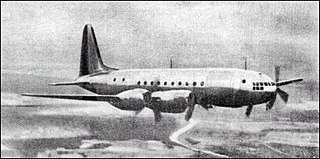
The Ilyushin Il-18 was a Soviet four-engined airliner designed and built by Ilyushin immediately after World War II. Although the aircraft itself was successful, its Shvetsov ASh-73TK engines were too unreliable for civilian use and were further needed to equip the Tupolev Tu-4 bomber, so it was cancelled in 1948.
The Arado Ar 81 was a German prototype dive bomber. Because the Reich Air Ministry decided to purchase the competing Junkers Ju 87, only three prototypes of the Ar 81 were completed.

The Colomban MC-30 Luciole is an ultra-lightweight plans-built single-seat low-wing tail-dragger monoplane, designed by the French aeronautical engineer Michel Colomban, creator of the tiny single-seat Colomban Cri-cri twin-engined aircraft and the MC-100 Ban-Bi two-seat aircraft.
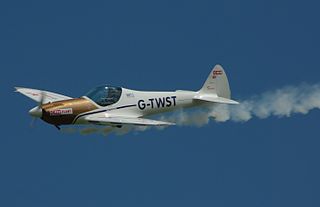
The Silence Twister is a German ultralight designed by Silence Aircraft for amateur construction, either from plans or kits. The prototype first flew on 30 September 2000.

Hoffman Propeller is a German manufacturer of aircraft propellers. The company headquarters is located at Rosenheim in Bavaria, Germany. The company makes design, manufacture and maintain propellers with blades in wooden composite construction for needed purposes, mainly for the general aviation, hovercraft and any special applications such as blades for wind tunnels the automotive industries. By the version of Aircraft Turboprop Propeller System Market Outlook, the company was one of the major market players.

Hartzell Propeller is an American manufacturer that was founded in 1917 by Robert N. Hartzell as the Hartzell Walnut Propeller Company. It produces composite and aluminum propellers for certified, homebuilt, and ultralight aircraft. The company is headquartered in Piqua, Ohio.
The Blériot-SPAD S.29 was a sport aircraft produced in 1919 by Blériot-SPAD.
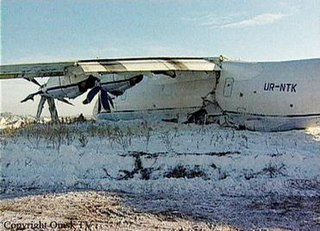
On 27 January 2001, an Antonov An-70 prototype crashed close to Omsk Tsentralny Airport, Russia during testing of the aircraft. All 33 passengers and crew on board the aircraft survived.